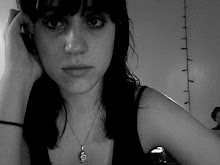1) Lefebvre asserts that the praxis is vast and encompasses base and superstructures...While Bourriaud says praxis is the act of self transformation, (translating idea or skill into action and practice), is it coincidental that the test used to assess people who wish to become teachers is also called praxis? According to the authors definitions, how does praxis relate to the job of a teacher?
2) When Lefebvre describes the everyday through examples of the housewife, society woman and mathematician, he says the housewife is swallowed by everyday life and escapes through dreams, tv, horoscopes, etc (trivial things), the society woman escapes through fashion and snobbery and the mathematician escapes through mechanical activity. He says the more technical the activity becomes, the more urgent the need is to return to the everyday...do you agree with this assertion? why or why not?
3) Why do you think modern artists have gravitated towards conviviality and relational encounters in their works? Is it more a personal preference or a universally shared desire for human interaction in such a technically advancing world?
4)Bourriaud mentions Gonzalez-Torres' "candy spills" and the dynamics of the viewer/artist/gallery relationship and interaction...Roni Horn, a working female artist, created Paired Gold Mats an homage to Gonzalez-Torres and his lover Ross in 1994. Was this creation more of a examination of the relationship of artist friends or the interaction of viewer to artwork (example, the play on light reflecting off different facets of the foil)? Click here for a photo of Horn's work.
Subscribe to:
Post Comments (Atom)


No comments:
Post a Comment